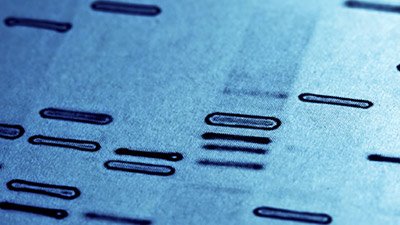Denisovan DNA’s Secrets
Denisovan DNA’s secrets—unveiled and interpreted
News Source
Denisovans are a recently discovered member of the human family, represented so far by only a finger bone and two teeth from Siberia. However, Denisovan DNA is already better studied than that of Neanderthals. Researchers sequencing their DNA with a new technique confirm that a substantial portion of modern Papuan DNA seems to have been obtained from Denisovans and that Denisovans, Neanderthals, and early modern humans all intermingled. By comparing the number of mutations in the Denisovan DNA with those in modern human DNA, they estimate the Denisovan girl died 75,000 years ago. Furthermore, they now claim to have additional evidence tracing the evolution of humans from an ape-like ancestor.
Efforts to sequence Neanderthals have been hampered by contamination with bacterial and modern human DNA. Only about 5% of the DNA from Neanderthal samples is actually Neanderthal DNA. By contrast, 70% of the DNA obtained from the Denisovan fragments seems to belong to the original owner. The partial sampling of her DNA in 2010 revealed that the Denisovan was a previously unknown archaic human. Now, a practically complete DNA sequence has been obtained using a new “high-coverage” technique. Results are consistent with a somewhat dark-skinned female with brown hair and eyes.
They believe any genomic similarity between modern humans and Denisovans to be evidence of changes that occurred as humans and chimps diverged from their common ancestor.
The researchers compared Denisovan DNA with that of chimps and modern humans. They believe any genomic similarity between modern humans and Denisovans to be evidence of changes that occurred as humans and chimps diverged from their common ancestor. For instance, they believe that human chromosome #2 is a fusion of two chromosomes that remain separate in chimps. Since Denisovan DNA is just like a modern human in this respect, they place the chromosomal fusion deeper in the genetic past than the Denisovan-modern human split.1
Comparing Denisovan DNA to modern human DNA, less than a tenth of a percent of the differences were in regions “known to affect the expression or structure of genes.” Many were in areas affecting the nervous system. And many of these differences were in areas of the genome associated with various skin and eye pathology. The rest of the differences were insignificant. Furthermore, the minimal evidence of genetic diversity in the DNA suggests that the Denisovan population was quite small.
Thus it seems that Denisovans and modern humans had a great deal in common, as did Denisovans and Neanderthals.2 Estimates of the antiquity of the DNA are based on a number of unverifiable assumptions about human evolution in general and about mutation rates in particular. Therefore, even though the number of differences between Denisovan DNA and that of modern humans can be assessed, interpretations about the age those differences represent are based on unverifiable assumptions.
According to the Bible, all human beings are descended from Adam, so we are not surprised to find that Denisovans, Neanderthals, and modern humans share genetic characteristics. Their similarities with each other and their differences from chimps are not evidence that chimps, Denisovans, and modern humans share an ape-like ancestor or that one human chromosome is an evolution-derived chromosomal fusion. Humans (including Denisovans) and apes are simply different and were created differently by God from the beginning.
Further Reading
- Neanderthals vs. Humans: Are They Different?
- When Did Cavemen Live?
- Were Cavemen Real?
- “The Search for the Historical Adam” and Population Genomics
For More Information: Get Answers
Remember, if you see a news story that might merit some attention, let us know about it! (Note: if the story originates from the Associated Press, FOX News, MSNBC, the New York Times, or another major national media outlet, we will most likely have already heard about it.) And thanks to all of our readers who have submitted great news tips to us. If you didn’t catch all the latest News to Know, why not take a look to see what you’ve missed?
(Please note that links will take you directly to the source. Answers in Genesis is not responsible for content on the websites to which we refer. For more information, please see our Privacy Policy.)
Footnotes
- Despite the confidence with which evolutionists proclaim that human chromosome #2 evolved from the fusion of two chromosomes in a human ancestor (after humans split from some shared ancestor with apes), the human chromosome does not have an extra centromere, which should be present had two chromosomes fused. And the centrally placed telomeric-like “end-pieces” evolutionists claim prove the chromosome is a fusion are actually just patterns which can be found near telomeres but are not limited to that location. The evolutionist’s interpretation of the appearance of the chromosome is based on a prior conviction that humans evolved from ape-like ancestors.
- Perhaps the appearance of genetically transmitted disease within a small group of people ultimately contributed to the Denisovan demise as a people, though admittedly only one person has been sampled thus far and the findings may not be confirmed if more Denisovans are ever found. This of course is only speculation, as we do not actually know to cause of extinction of any of the so-called “archaic” humans.
Recommended Resources

Answers in Genesis is an apologetics ministry, dedicated to helping Christians defend their faith and proclaim the good news of Jesus Christ.
- Customer Service 800.778.3390
- Available Monday–Friday | 9 AM–5 PM ET
- © 2025 Answers in Genesis




